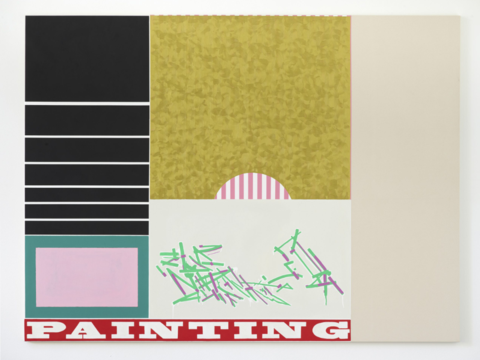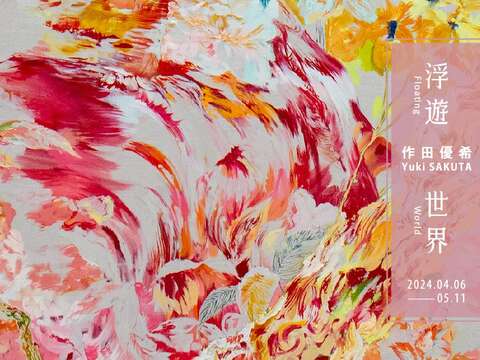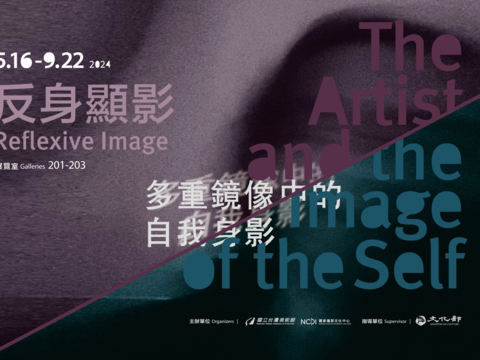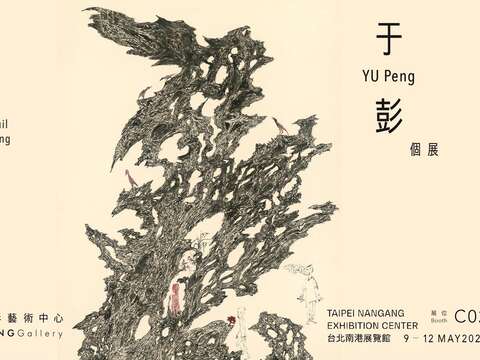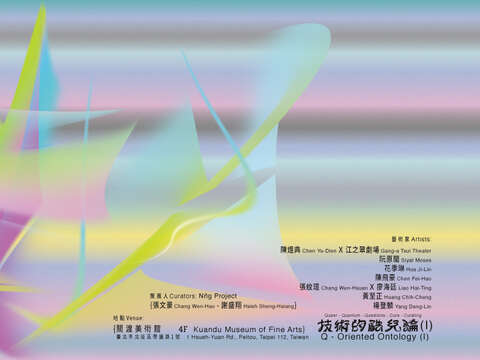Post date:2024-02-16
Updates:2024-02-16
246
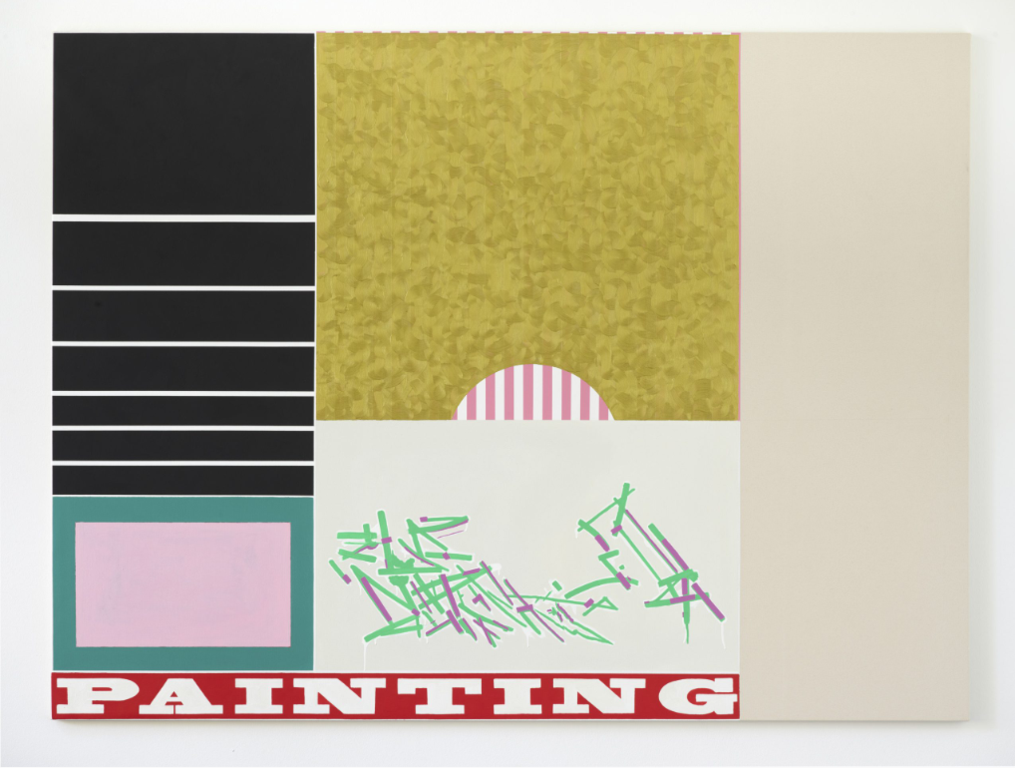
- Event Time
- 2024-02-24~2024-04-03Tue. - Sat. 12:30 -18:30
- Event Location
- 3F., No. 97, Sec. 2, Dunhua S. Rd, Da'an Dist., Taipei City Taiwan, R.O.C
I realized that not having a style is also a style, and then I pursued this style. — Martin Kippenberger
Each Modern is pleased to present “American Painting,” the first solo exhibition of American artist Egan Frantz in the Chinese region.
Many of the artistic developments in the 20th century attempted to sever the connection between artistic subjectivity and the art object's autonomy by subverting the mechanisms of aesthetic expression. For example: Picasso and Braque's cubism sought to negate art's reliance on visual reality, Duchamp rejected “retinal” art altogether with his readymades, Jasper Johns and Robert Rauschenberg avoided the need to invent images through the use of preexisting ones, and conceptualists dismissed the primacy of the artwork itself. Each tried to get away from the aesthetic conventions of their time and made enduring art in the process. Kippenberger's sentiment, however, notes the limits of this strategy; avoiding convention only leads to new aesthetic conventions, so style and subjectivity persist even in their negation.
Thus, artists cannot escape their ties to their work, but the legacy of the last century shows how far that bond can be bent without breaking. Picasso cycled through dozens of distinct periods without ever contradicting his own sensibility, as did all of the above artists, to say nothing of Kippenberger's own prodigious flippancy towards his oeuvre. This isn't to imply that artists have forsaken continuity in their practices. Artistic development remains a risky business. History has had little trouble integrating these complex oeuvres into its pantheon, but the general audience and the market is stubbornly resistant to surprise. This leads artists to limit the scope of their practices, fearful that genuine exploration is a sure path to obscurity. Paradoxically, a resistance to repetition should affirm the unity of an artist's subjectivity where the need for obvious continuity speaks to an anxious desire to reaffirm the public’s sense of who an artist is.
This is the context from which Egan Frantz emerges: “Not only do I seek out combinatorial surprise with each new work, I’ve done it for long enough that no one expects any less of me. In that sense I am consistent and in that I am free.” As a rule Frantz has explored new techniques and materials in his work, but in doing so he does not seek to negate the notion of personal style. Rather he investigates, bends, twists, cuts, and folds the nature of his artistic subjectivity by means of an expanded technical syntax. An anxious, painterly moment here could be a cartoonish representation there, a rhythmic line could be broken or curvilinear, and vividly colorful interludes are readily replaced with dark or somber moments. This radically pluralistic approach to painting may be confounding, if only because it works.
Each Modern is pleased to present “American Painting,” the first solo exhibition of American artist Egan Frantz in the Chinese region.
Many of the artistic developments in the 20th century attempted to sever the connection between artistic subjectivity and the art object's autonomy by subverting the mechanisms of aesthetic expression. For example: Picasso and Braque's cubism sought to negate art's reliance on visual reality, Duchamp rejected “retinal” art altogether with his readymades, Jasper Johns and Robert Rauschenberg avoided the need to invent images through the use of preexisting ones, and conceptualists dismissed the primacy of the artwork itself. Each tried to get away from the aesthetic conventions of their time and made enduring art in the process. Kippenberger's sentiment, however, notes the limits of this strategy; avoiding convention only leads to new aesthetic conventions, so style and subjectivity persist even in their negation.
Thus, artists cannot escape their ties to their work, but the legacy of the last century shows how far that bond can be bent without breaking. Picasso cycled through dozens of distinct periods without ever contradicting his own sensibility, as did all of the above artists, to say nothing of Kippenberger's own prodigious flippancy towards his oeuvre. This isn't to imply that artists have forsaken continuity in their practices. Artistic development remains a risky business. History has had little trouble integrating these complex oeuvres into its pantheon, but the general audience and the market is stubbornly resistant to surprise. This leads artists to limit the scope of their practices, fearful that genuine exploration is a sure path to obscurity. Paradoxically, a resistance to repetition should affirm the unity of an artist's subjectivity where the need for obvious continuity speaks to an anxious desire to reaffirm the public’s sense of who an artist is.
This is the context from which Egan Frantz emerges: “Not only do I seek out combinatorial surprise with each new work, I’ve done it for long enough that no one expects any less of me. In that sense I am consistent and in that I am free.” As a rule Frantz has explored new techniques and materials in his work, but in doing so he does not seek to negate the notion of personal style. Rather he investigates, bends, twists, cuts, and folds the nature of his artistic subjectivity by means of an expanded technical syntax. An anxious, painterly moment here could be a cartoonish representation there, a rhythmic line could be broken or curvilinear, and vividly colorful interludes are readily replaced with dark or somber moments. This radically pluralistic approach to painting may be confounding, if only because it works.
Related Links
Gallery
:::
 Egan Frantz: American Painting
Egan Frantz: American Painting